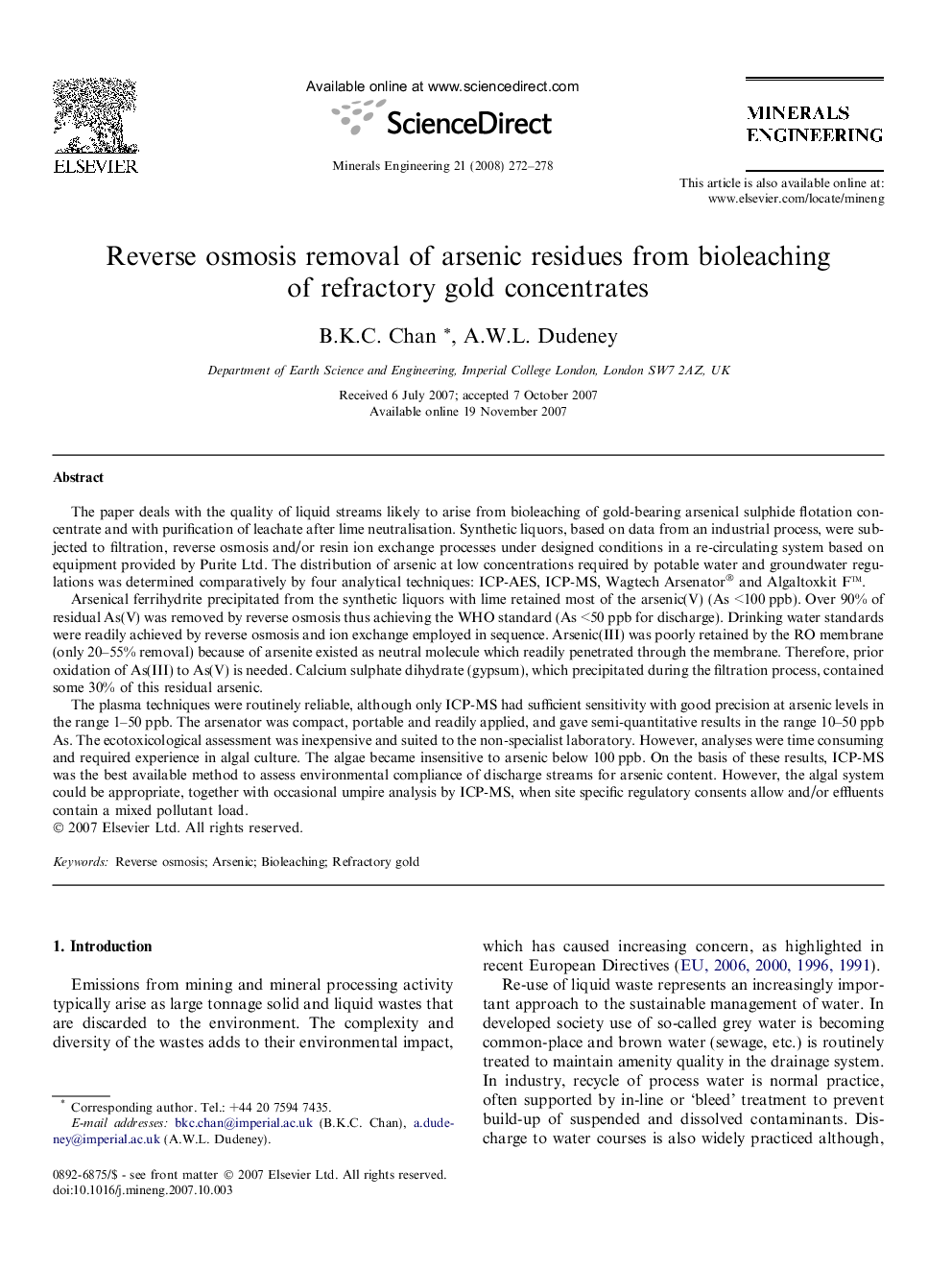| کد مقاله | کد نشریه | سال انتشار | مقاله انگلیسی | نسخه تمام متن |
|---|---|---|---|---|
| 234355 | 465404 | 2008 | 7 صفحه PDF | دانلود رایگان |

The paper deals with the quality of liquid streams likely to arise from bioleaching of gold-bearing arsenical sulphide flotation concentrate and with purification of leachate after lime neutralisation. Synthetic liquors, based on data from an industrial process, were subjected to filtration, reverse osmosis and/or resin ion exchange processes under designed conditions in a re-circulating system based on equipment provided by Purite Ltd. The distribution of arsenic at low concentrations required by potable water and groundwater regulations was determined comparatively by four analytical techniques: ICP-AES, ICP-MS, Wagtech Arsenator® and Algaltoxkit F™.Arsenical ferrihydrite precipitated from the synthetic liquors with lime retained most of the arsenic(V) (As <100 ppb). Over 90% of residual As(V) was removed by reverse osmosis thus achieving the WHO standard (As <50 ppb for discharge). Drinking water standards were readily achieved by reverse osmosis and ion exchange employed in sequence. Arsenic(III) was poorly retained by the RO membrane (only 20–55% removal) because of arsenite existed as neutral molecule which readily penetrated through the membrane. Therefore, prior oxidation of As(III) to As(V) is needed. Calcium sulphate dihydrate (gypsum), which precipitated during the filtration process, contained some 30% of this residual arsenic.The plasma techniques were routinely reliable, although only ICP-MS had sufficient sensitivity with good precision at arsenic levels in the range 1–50 ppb. The arsenator was compact, portable and readily applied, and gave semi-quantitative results in the range 10–50 ppb As. The ecotoxicological assessment was inexpensive and suited to the non-specialist laboratory. However, analyses were time consuming and required experience in algal culture. The algae became insensitive to arsenic below 100 ppb. On the basis of these results, ICP-MS was the best available method to assess environmental compliance of discharge streams for arsenic content. However, the algal system could be appropriate, together with occasional umpire analysis by ICP-MS, when site specific regulatory consents allow and/or effluents contain a mixed pollutant load.
Journal: Minerals Engineering - Volume 21, Issue 4, March 2008, Pages 272–278